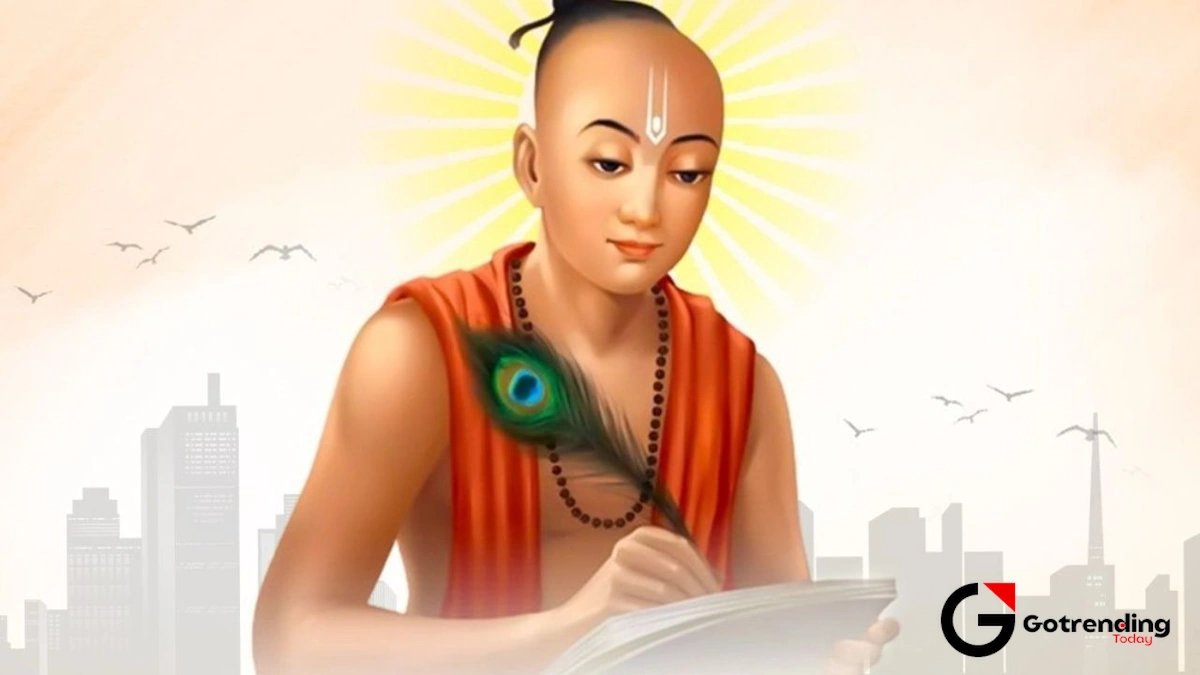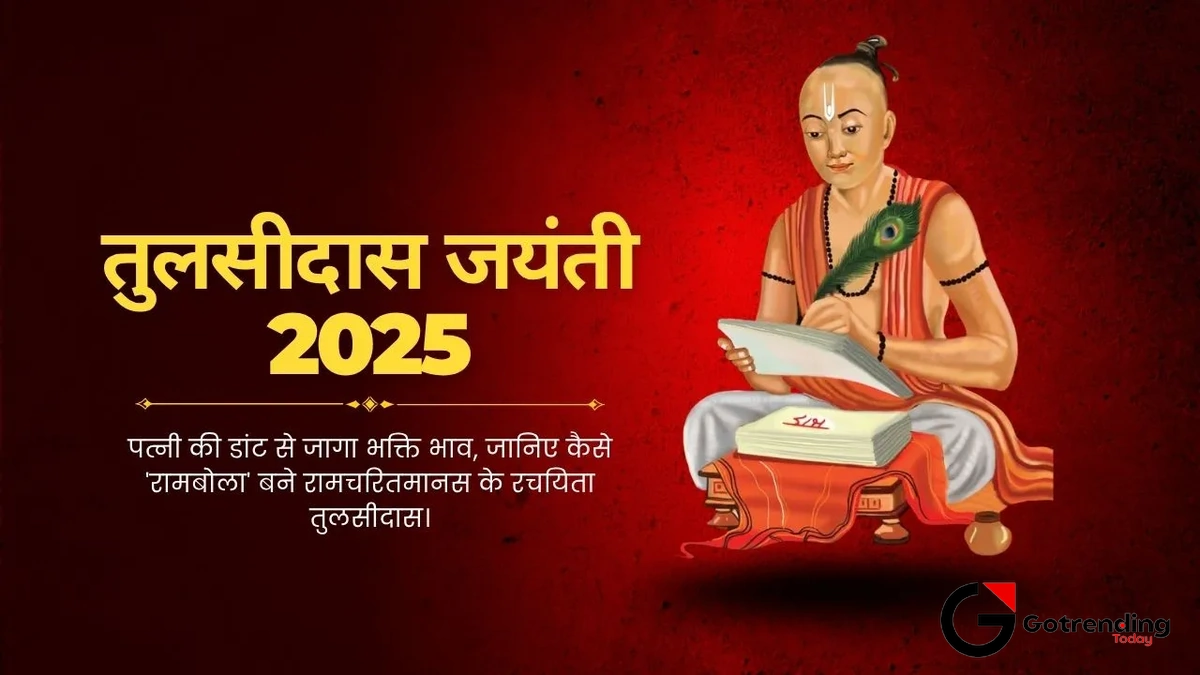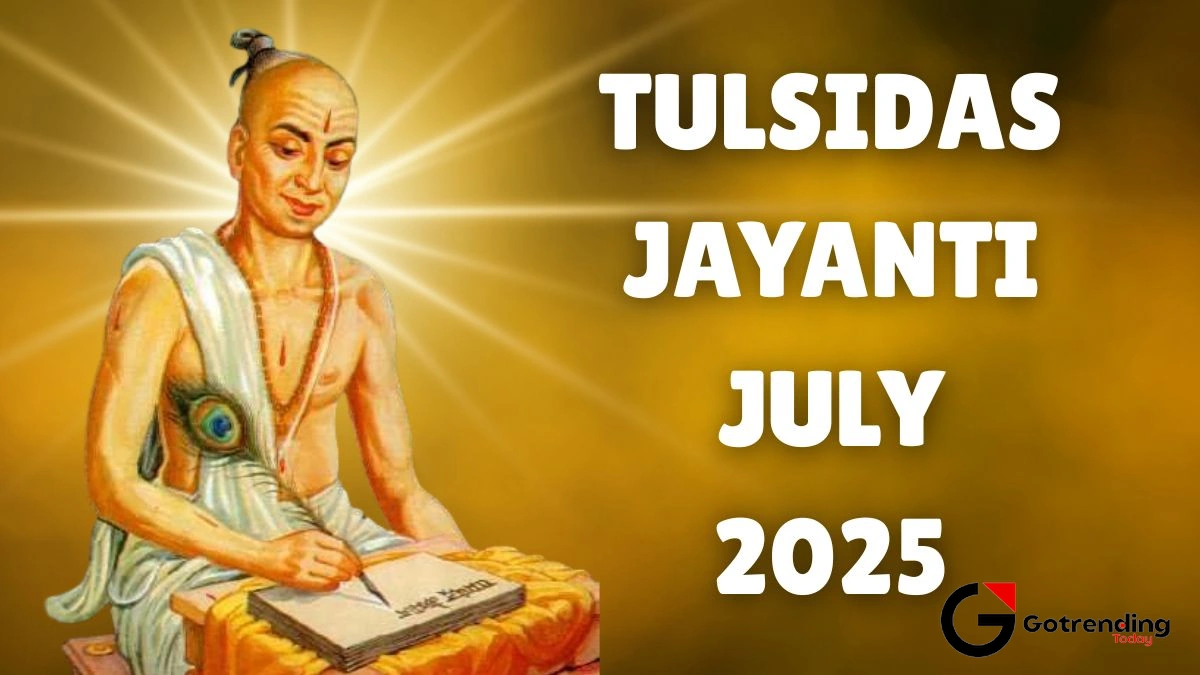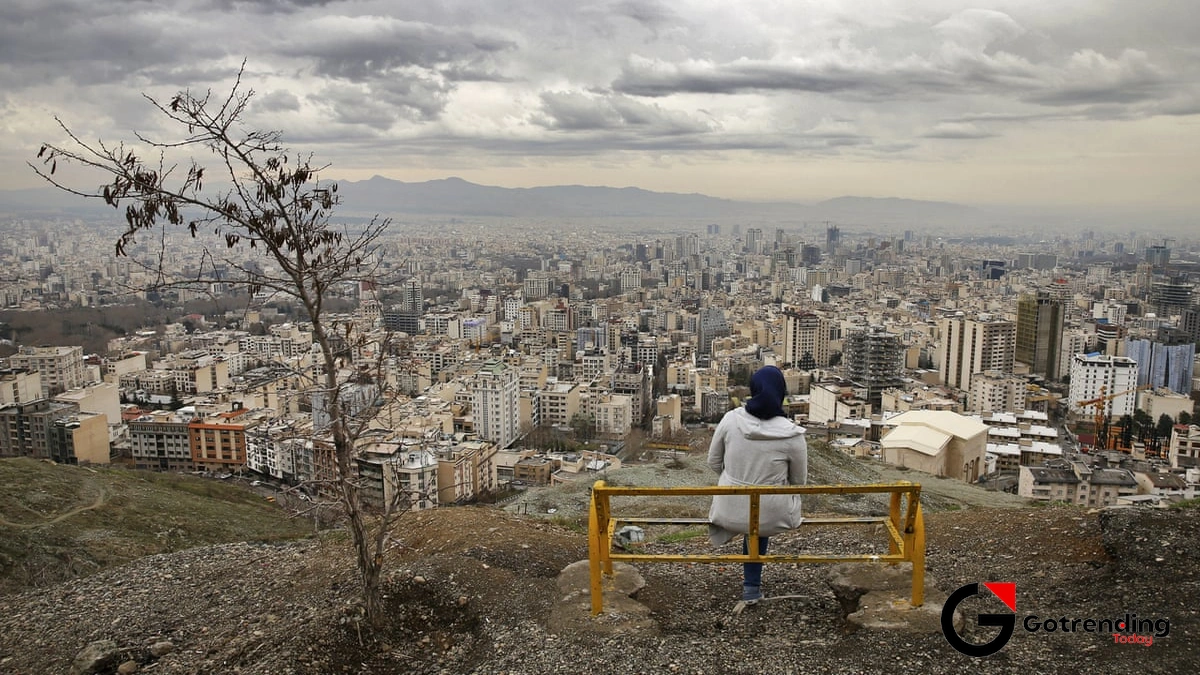Beyond the Holy Verses | Finding the Human in Tulsidas Jayanti 2025
There’s a sound that’s woven into the very fabric of North India. You hear it drifting from temples at dawn, from the open windows of homes in the afternoon, from the crackle of a loudspeaker at a village crossroads. It’s a rhythmic, hypnotic cadence the chanting of the Ramcharitmanas . And for me, that sound is inextricably linked to one name: Tulsidas.
We mark his birth with a Jayanti, a celebration. But here’s the thing. It’s easy to file these events away as just another date on a religious calendar. Another box to tick. But with Tulsidas Jayanti 2025 approaching, I’ve been thinking about the man behind the epic. Not the saint on a pedestal, but the poet, the rebel, the philosopher who did something truly radical.
Let’s get the logistics out of the way first, because I know that’s what you’re probably searching for.
So, When Exactly is Tulsidas Jayanti 2025?

Mark your calendars. Tulsidas Jayanti 2025 falls on Saturday, August 2nd. But it’s never just about the Gregorian date, is it? The real magic lies in the Hindu lunar calendar. The day is Sawan Shukla Saptami . Let’s break that down. ‘Sawan’ is the sacred monsoon month dedicated to Lord Shiva. ‘Shukla Paksha’ is the waxing phase of the moon, the bright fortnight. And ‘Saptami’ is the seventh day. There’s a poetry to it, a connection to natural cycles that our fixed calendars often miss. It’s on this auspicious seventh day of the bright moon, during the life-giving rains of Sawan, that we celebrate the birth of Goswami Tulsidas .
But why does this 16th-century poet still command such reverence? It’s a question worth asking. In an age of fleeting digital content, why does a 400-year-old text endure? The answer, I think, is because Tulsidas wasn’t just writing. He was democratizing divinity.
More Than Just a Poet | Why Tulsidas Still Matters

Before Tulsidas, the story of Ramayana was largely the domain of the elite, composed in Sanskrit by the sage Valmiki. It was profound, beautiful, but inaccessible to the common person who didn’t speak the language of scholars. Tulsidas saw this. And he did something that, in its time, was revolutionary. He decided to rewrite or, more accurately, transcreate the epic in the Awadhi dialect , the language of the people in the heartland of India.
Think about the audacity of that. It was like taking the most complex academic papers and turning them into a gripping, heartfelt novel that anyone could pick up and understand. He wasn’t just translating words; he was translating an entire universe of emotion, ethics, and spirituality. He took the divine and made it personal. Ram wasn’t just a distant, perfect god-king; in the pages of the Ramcharitmanas, he was a son, a husband, a brother who felt pain and loss. He was relatable.
It’s a bit like solving a complex puzzle. You take all these intricate, abstract pieces of philosophy and weave them into a single, compelling narrative thread. Honestly, the way he connects deep spiritual concepts with simple, human stories sometimes reminds me of the mental satisfaction you get from a good puzzle, like figuring out the connections in the daily ` NYT Strands `. It’s about seeing the bigger picture emerge from seemingly separate parts. He made the cosmic feel conversational.
This act of making the sacred accessible is his true legacy. It wasn’t just about piety; it was about empowerment.
Celebrating the Man Who Gave Us the Hanuman Chalisa

So, how do people celebrate Tulsidas Jayanti ? It’s not about grand, flashy parades. It’s more intimate. In places like Ayodhya and Varanasi (especially at the Tulsi Ghat, named for him), you’ll find continuous recitations of the Ramcharitmanas, often lasting for 24 hours straight the Akhand Path.
Scholars and devotees gather for satsangs to discuss the nuances of Tulsidas ke dohe (his couplets), which are packed with so much worldly wisdom and devotional love. You find wisdom on everything from governance to humility packed into two simple lines.
And then there’s his other masterpiece. The one that’s probably on the lips of millions of Hindus every single day: the Hanuman Chalisa . Yes, that powerful 40-verse hymn in praise of Lord Hanuman was his creation. It’s a spiritual shield for many, a source of courage. To think that one man gave us both the epic narrative of Ram and the ultimate pocket-sized prayer to his greatest devotee… it’s staggering. He was a master of both the sprawling epic and the concise, potent hymn. The cosmic battles he described, the clash between dharma and adharma, were the original epic showdowns. It was a war with stakes far higher than in any video game; let’s be real, it puts wondering ` why play pubg mobile ` into a very different perspective.
The celebrations are a reflection of his work: accessible, community-focused, and deeply personal. It’s about remembering the man who believed that God’s story belonged to everyone. He was, as you can learn more about from his detailed history on ` Wikipedia `, a pivotal figure in India’s Bhakti movement.
I initially thought of Tulsidas as just another name in a long line of saints. But the more I sit with his work, the more I see a brilliant communicator, a linguistic genius, and a spiritual democrat. He didn’t just preserve a story; he gave it wings, and it has been flying through the hearts of people for centuries. And that’s something worth celebrating, isn’t it?
Frequently Asked Questions (FAQs)
What is the exact date for Tulsidas Jayanti 2025?
For 2025, Tulsidas Jayanti will be observed on Saturday, August 2nd. This corresponds to the traditional Hindu date of Sawan Shukla Saptami, which is the seventh day of the bright, waxing phase of the moon in the month of Sawan.
Why is Tulsidas so important? Was he just a poet?
Calling him “just a poet” is like calling Shakespeare “just a playwright.” While he was a brilliant poet, his main importance comes from his work in making the epic Ramayana accessible to the masses by writing the Ramcharitmanas in the local Awadhi dialect, rather than the scholarly Sanskrit. This act transformed society and deepened the roots of the Bhakti movement.
How can I celebrate Tulsidas Jayanti at home?
Celebrating at home can be very meaningful. You can read a few passages from the Ramcharitmanas or listen to a recitation online. Many people choose to recite the Hanuman Chalisa , his most famous hymn. You could also simply spend a few moments reflecting on one of his dohas (couplets) and its wisdom. It’s about connecting with the spirit of his work.
Didn’t Valmiki write the Ramayana? Why is Tulsidas’s version so famous?
This is a great question and a common point of confusion. Yes, the sage Valmiki composed the original Ramayana in Sanskrit thousands of years ago. Tulsidas’s version, the Ramcharitmanas, is not a direct translation but a retelling in the Awadhi language. It became immensely famous because it brought the story and its spiritual lessons to the common people in a language they understood and loved, filled with devotional (Bhakti) flavour.
Is Tulsidas the one who wrote the Hanuman Chalisa?
Yes, absolutely. Besides his magnum opus, the Ramcharitmanas, Goswami Tulsidas is also credited with composing the Hanuman Chalisa. It is one of the most widely recited hymns in Hinduism, cherished as a prayer for strength, protection, and devotion.













